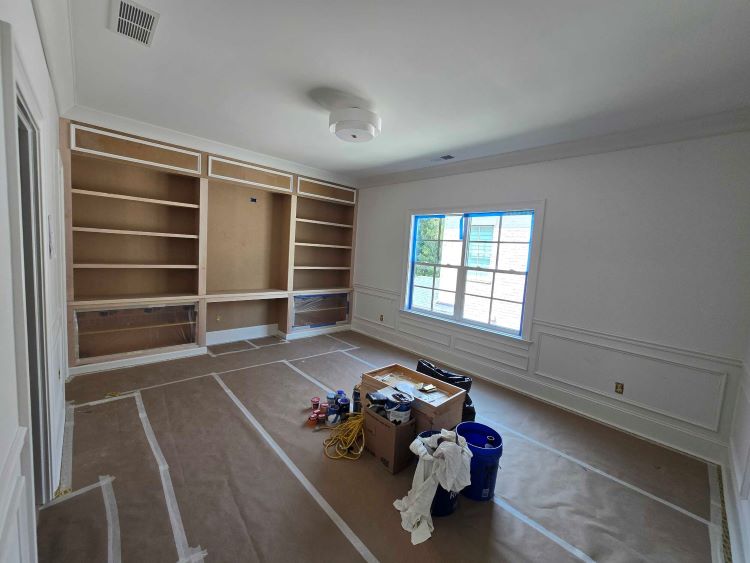From a homeowner who learned the hard way
When I decided it was time to repaint the interior of my home, I followed what I thought was standard advice: get multiple quotes, compare the numbers, and go with the best deal. I received three estimates from different painting companies. The lowest quote came in nearly $3,000 less than the others. It seemed like a no-brainer at the time. I thought, “They’re all painting the same walls, so why not save a little?”
What I didn’t understand then—but I absolutely do now—is that not all painting quotes are created equal.
Unfortunately, I learned this lesson the hard way. The company I hired cut corners at every stage, and what I saved up front ended up costing me more in repairs, clean-up, and stress.
If you’re comparing painting quotes right now, I hope my experience helps you understand why some numbers are lower—and what you could be giving up in the process.
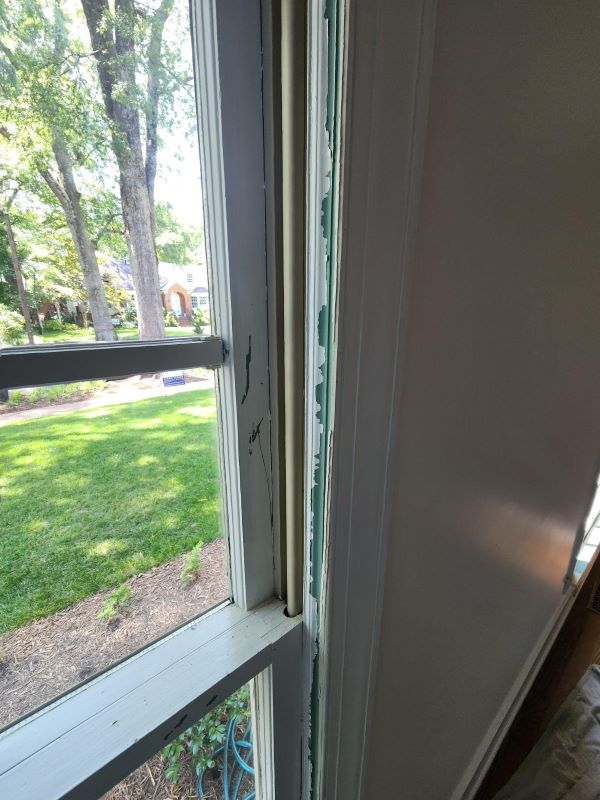
1. The Prep Work Was Barely Done
The most obvious difference I saw—though I didn’t realize it until it was too late—was the lack of preparation. The crew arrived with rollers and drop cloths and started applying paint within what felt like an hour of showing up.
They didn’t:
- Clean the walls
- Fill most nail holes
- Caulk any gaps
- Scuff sand glossy surfaces
- Prime patched areas
I later learned from another painter that prep is the foundation of a long-lasting paint job. Professional crews spend just as much—if not more—time prepping as they do painting. And the standard they follow is simple but strict: every surface should be clean, dull, and dry.
That means:
- Clean – Free of dust, grease, oils, and residues
- Dull – Glossy surfaces need to be scuff sanded to promote adhesion
- Dry – Moisture on a surface will cause paint to blister or peel
The team I hired skipped most of that. The result? Within weeks, I saw areas where the paint bubbled or peeled, especially on trim that had been glossy. There were roller marks where patches weren’t sanded flush and visible seams that should’ve been caulked.
I thought I was paying for a paint job—but what I got felt more like a rush job.
2. Cheap Paint = Fragile Finish
When I received my quote, it said “premium paint included.” But they never told me which paint, or even which brand. When I asked, they vaguely said it was “comparable to what the others use.”
Well, it wasn’t.
They used a contractor-grade paint that was flat, chalky, and incredibly fragile. Within a month, I had scuffs in high-traffic areas and couldn’t clean them without removing the paint itself. In one case, I used a Magic Eraser on a wall and actually took the paint off—down to the old color underneath.
I’ve since learned that not all “premium” paints are the same. There’s a huge difference between a $25 contractor-grade gallon and a $70 high-performance product like Sherwin-Williams Duration Home or Benjamin Moore Regal.
A reputable painting company will:
- List the brand and product name in the quote
- Specify the sheen (matte, eggshell, satin) based on room type
- Explain why they’re choosing a certain paint for your space
Cheaper quotes usually don’t do this—and now I understand why. The cost savings often come from using lower-quality materials that don’t hold up.


2. Cheap Paint = Fragile Finish
When I received my quote, it said “premium paint included.” But they never told me which paint, or even which brand. When I asked, they vaguely said it was “comparable to what the others use.”
Well, it wasn’t.
They used a contractor-grade paint that was flat, chalky, and incredibly fragile. Within a month, I had scuffs in high-traffic areas and couldn’t clean them without removing the paint itself. In one case, I used a Magic Eraser on a wall and actually took the paint off—down to the old color underneath.
I’ve since learned that not all “premium” paints are the same. There’s a huge difference between a $25 contractor-grade gallon and a $70 high-performance product like Sherwin-Williams Duration Home or Benjamin Moore Regal.
A reputable painting company will:
- List the brand and product name in the quote
- Specify the sheen (matte, eggshell, satin) based on room type
- Explain why they’re choosing a certain paint for your space
Cheaper quotes usually don’t do this—and now I understand why. The cost savings often come from using lower-quality materials that don’t hold up.
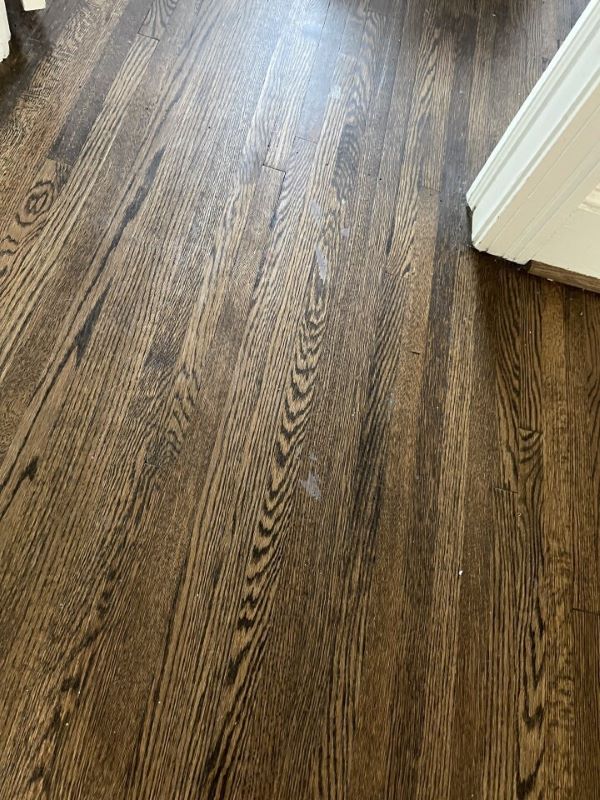
3. There Was No Real Oversight
The painter I hired was clearly juggling too many jobs. Each day, a different crew member would show up, and there was no clear project lead. No daily check-in. No schedule. No quality control.
At one point, they left without finishing a room because they “ran out of paint”—and didn’t come back for four days.
Meanwhile, they left tools on my counters, left the front door open while they worked, and didn’t properly cover my hardwood floors. I ended up with paint splatter on hardwood floors and the edge of a built-in cabinet that had to be refinished.
When I tried to reach out, my calls went to voicemail. I finally got a text response several days later.
In contrast, I’ve since spoken with reputable painters who use apps like BuilderTrend or CoConstruct to track daily progress, log photos, and communicate in real-time with clients. When I asked them if this kind of disorganization was normal, they politely said: “Not with a company that values quality.”
4. The Work Didn’t Last
By month two, things were already going downhill. Cracks reappeared where they’d skipped caulking. The paint was chipping around a door frame they had brushed without sanding. Even the ceiling had uneven coverage—light streaks from poor rolling technique.
I felt like I couldn’t enjoy the “freshly painted” look because I kept seeing new issues pop up.
Eventually, I had a different company come in to touch things up. They spent more time prepping one wall than the original crew did in the entire room—and the difference was night and day.
Of course, that meant I was paying again. Between the touchups, time off work, and stress, I easily spent more than I would’ve if I had gone with a more expensive but more professional painter from the start.
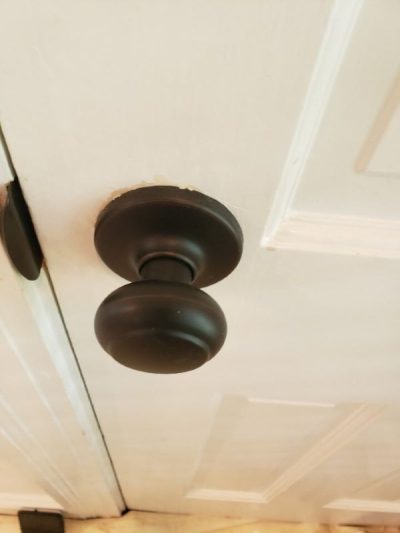

4. The Work Didn’t Last
By month two, things were already going downhill. Cracks reappeared where they’d skipped caulking. The paint was chipping around a door frame they had brushed without sanding. Even the ceiling had uneven coverage—light streaks from poor rolling technique.
I felt like I couldn’t enjoy the “freshly painted” look because I kept seeing new issues pop up.
Eventually, I had a different company come in to touch things up. They spent more time prepping one wall than the original crew did in the entire room—and the difference was night and day.
Of course, that meant I was paying again. Between the touchups, time off work, and stress, I easily spent more than I would’ve if I had gone with a more expensive but more professional painter from the start.
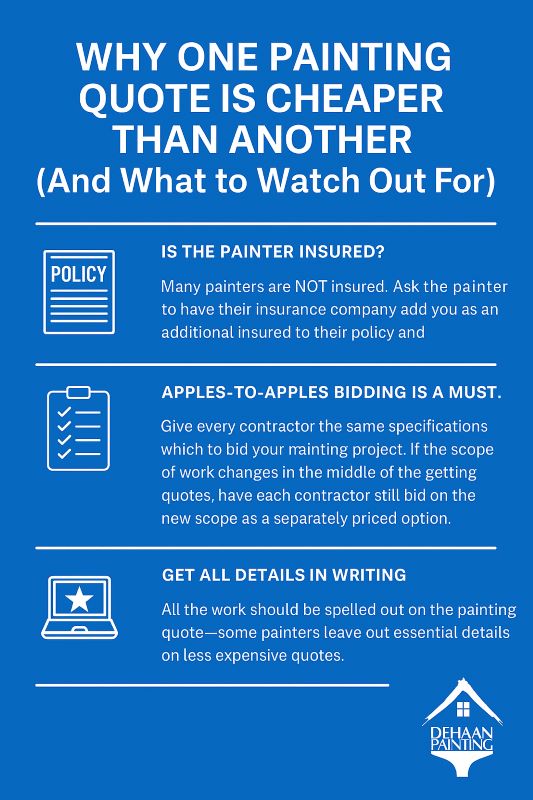
5. The Hidden Costs of a Cheap Quote
Here’s what I wish I had understood when reviewing quotes:
| What Lower Bids Might Exclude | Why It Matters |
| Detailed prep work (caulking, sanding) | Paint won’t stick well without it |
| Higher-end paint brands & finishes | Impacts durability and washability |
| Multiple coats or primer when needed | Coverage may be uneven or patchy |
| Jobsite protection (floors, furniture) | Prevents damage and cleanup issues |
| Clear communication & project oversight | Keeps things on schedule and stress-free |
What I’d Ask Next Time
If I could go back, here are the questions I’d ask before choosing a painting contractor:
- What brand and product of paint will you use?
- What prep steps are included in your price?
- How will you protect my floors and furniture?
- How many coats will be applied? Will you spot-prime repairs?
- Do you have reviews or references from recent jobs?
- Who is my main point of contact during the project?
If they can’t answer these clearly—or try to brush them off—that’s a red flag.
Final Thoughts: You Get What You Pay For
I understand the temptation to go with the lowest price. Home improvements are expensive, and it’s natural to want to save money. But when it comes to painting—especially in your home—you’re not just buying color. You’re buying craftsmanship, attention to detail, and materials that stand the test of time.
The lowest bid often means something is being left out: the prep, the product, or the professionalism.
If I can offer one piece of advice: don’t just compare the numbers—compare the process. Ask more questions. Trust your gut. And remember that a quality job isn’t just about how it looks on Day 1—it’s about how it holds up for years to come.
Need Something Painted?
Home improvements can be expensive, so it’s natural to want to cut costs where you can. But when it comes to painting—especially inside your home—it’s about more than just color. With DeHaan Painting, you’re investing in our skilled craftsmanship, attention to detail, and high-quality materials that are built to last. Contact us today to discuss your next project and discover the difference that true quality makes.

Helping Thousands of Families in Plaza Midwood, Noda, Chantilly, Dilworth, Elizabeth, Myers Park, South Park, Barclay Downs and Surrounding Areas.
DeHaan Painting
“Charlotte’s Premier Painter”
Dock, Deck, Fence Staining – Interior House Painting – Exterior House Painting – Kitchen Cabinet Painting – Limewash Applications – Commercial Painting – Christmas Light Installer
Phone: (980) 224-3191
Email: info@dehaanpaints.com

